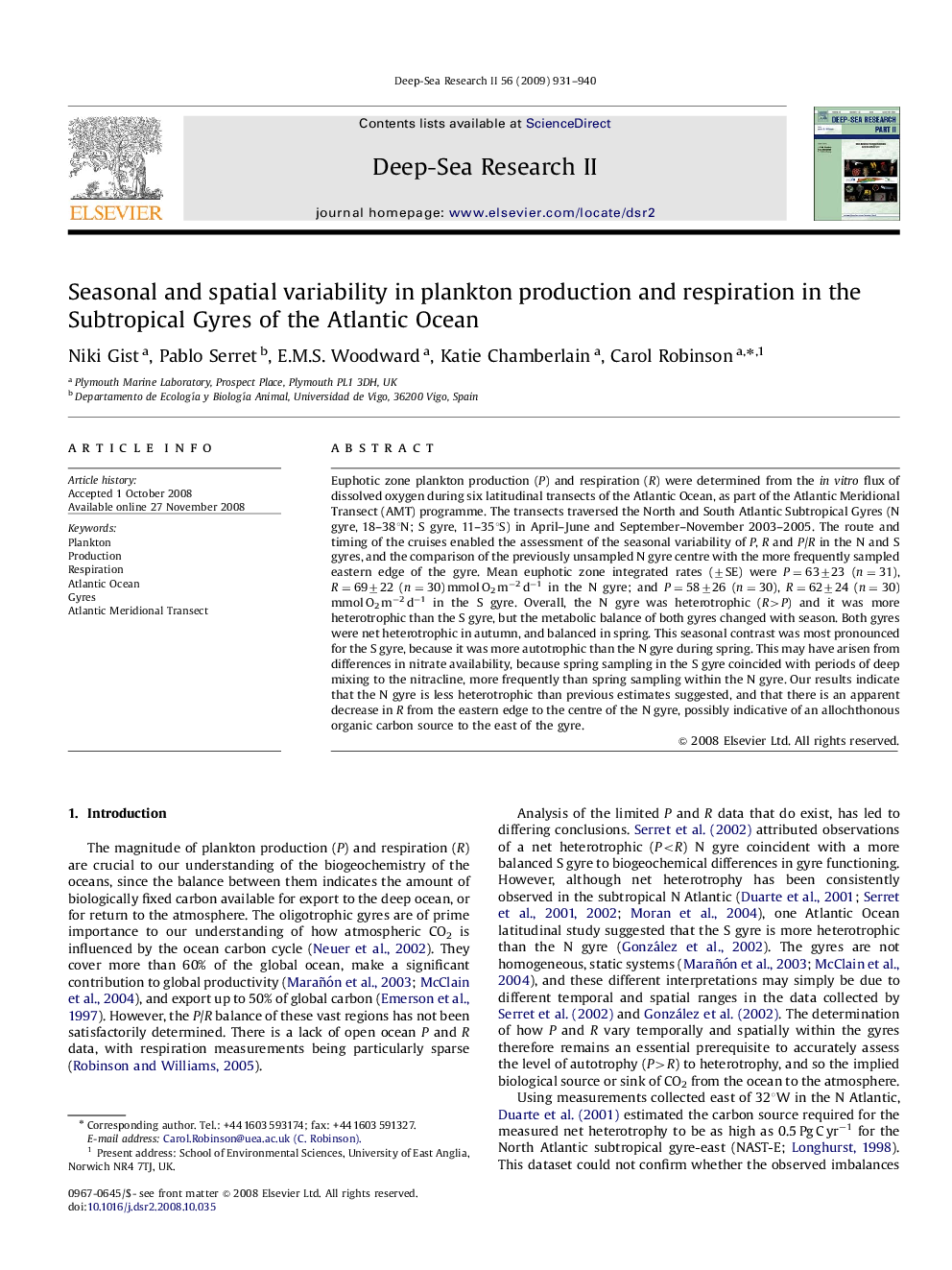| Article ID | Journal | Published Year | Pages | File Type |
|---|---|---|---|---|
| 4537621 | Deep Sea Research Part II: Topical Studies in Oceanography | 2009 | 10 Pages |
Euphotic zone plankton production (P) and respiration (R) were determined from the in vitro flux of dissolved oxygen during six latitudinal transects of the Atlantic Ocean, as part of the Atlantic Meridional Transect (AMT) programme. The transects traversed the North and South Atlantic Subtropical Gyres (N gyre, 18–38°N; S gyre, 11–35°S) in April–June and September–November 2003–2005. The route and timing of the cruises enabled the assessment of the seasonal variability of P, R and P/R in the N and S gyres, and the comparison of the previously unsampled N gyre centre with the more frequently sampled eastern edge of the gyre. Mean euphotic zone integrated rates (±SE) were P=63±23 (n=31), R=69±22 (n=30) mmol O2 m−2 d−1 in the N gyre; and P=58±26 (n=30), R=62±24 (n=30) mmol O2 m−2 d−1 in the S gyre. Overall, the N gyre was heterotrophic (R>P) and it was more heterotrophic than the S gyre, but the metabolic balance of both gyres changed with season. Both gyres were net heterotrophic in autumn, and balanced in spring. This seasonal contrast was most pronounced for the S gyre, because it was more autotrophic than the N gyre during spring. This may have arisen from differences in nitrate availability, because spring sampling in the S gyre coincided with periods of deep mixing to the nitracline, more frequently than spring sampling within the N gyre. Our results indicate that the N gyre is less heterotrophic than previous estimates suggested, and that there is an apparent decrease in R from the eastern edge to the centre of the N gyre, possibly indicative of an allochthonous organic carbon source to the east of the gyre.
